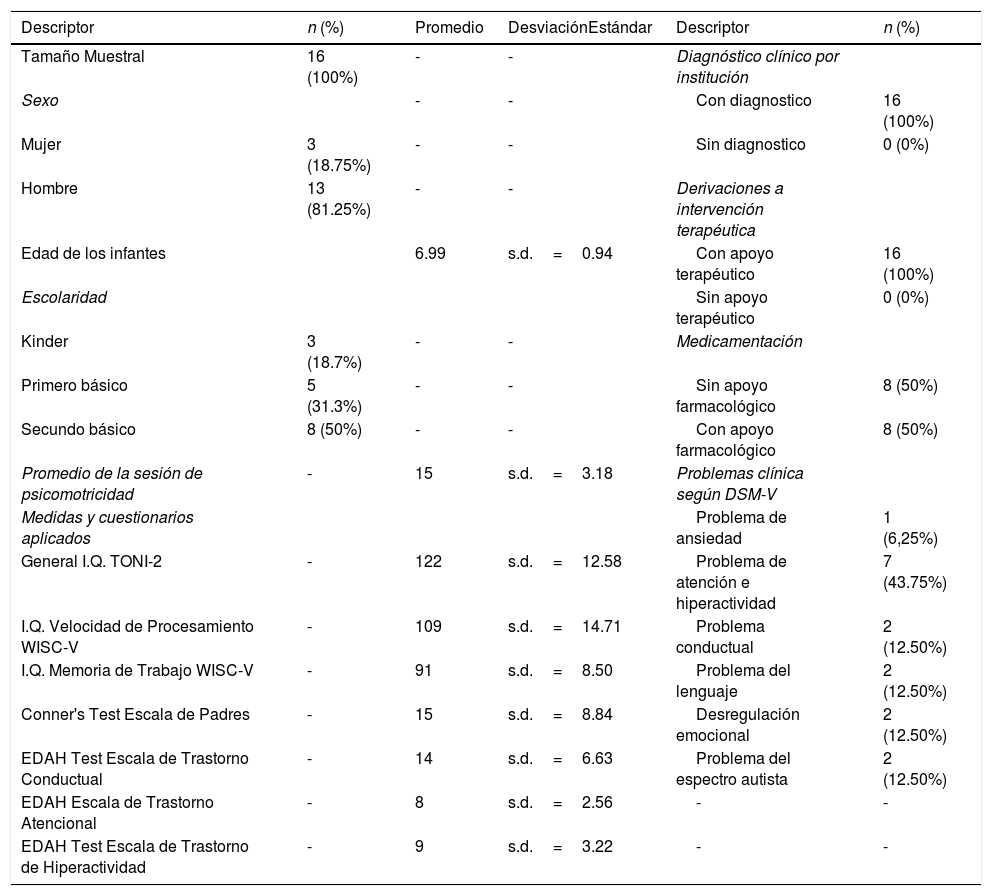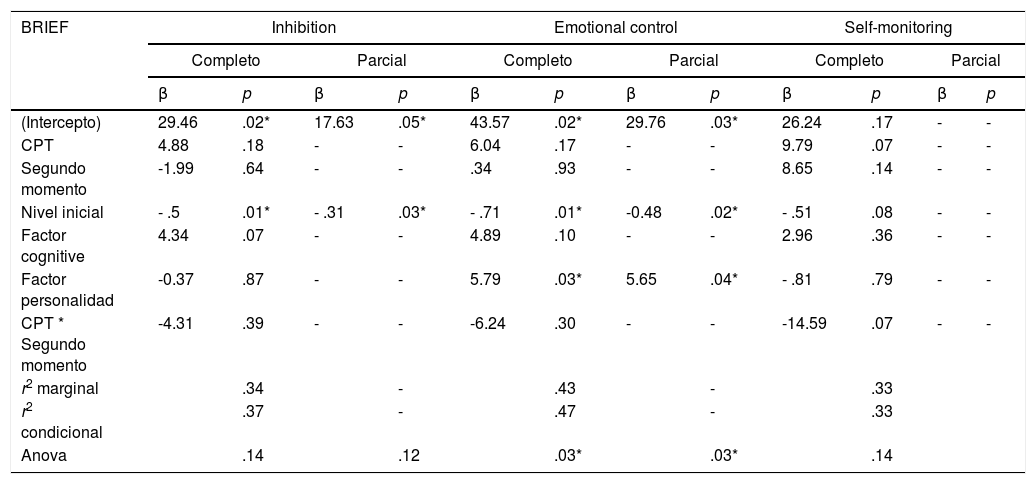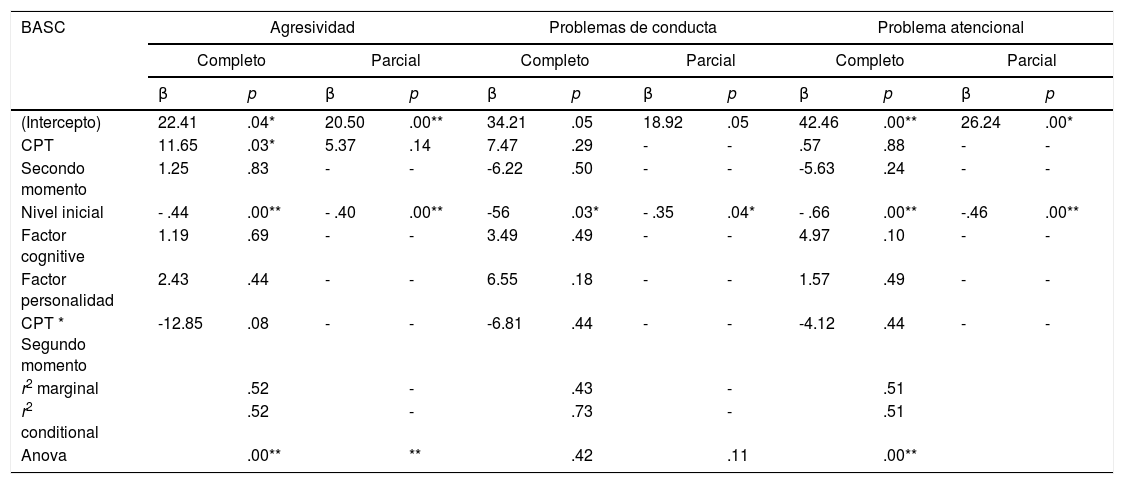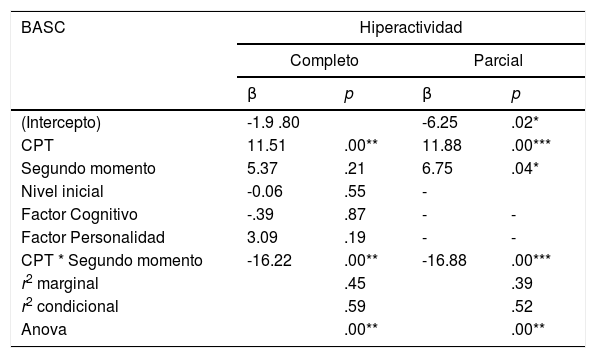Los niños diagnosticados con trastorno por déficit de atención con hiperactividad (TDAH) necesitan reducir sus síntomas mediante intervenciones. Se ha realizado un diseño cuasi-experimental cruzado dirigido tanto a madres y padres como a sus hijos diagnosticados con TDAH. Específicamente, una Terapia de Vinculación Familiar (FBT) para madres y padres y una Terapia Psicomotriz Clínica (CPT) para niños/as con TDAH. La muestra ha estado compuesta por tres niñas y trece niños de entre 5 años 11 meses y 9 años, además de sus padres y madres. Los niños han sido evaluados al inicio, mitad y final de las intervenciones. Su capacidad de autorregulación se ha medido a través de dos cuestionarios dirigidos a madres y padres (Behavioral Assessment of Executive Function/BRIEF-2 y Behavior Assessment System for children/BASC). Los indicadores de ambos cuestionarios han cuantificado cambios en la autorregulación como variable de respuesta. Los métodos estadísticos asociados a modelos lineales mixtos han medido el efecto y orden del tratamiento como variables explicativas. Además, se han incorporado variables de control, como el nivel inicial de respuesta y covariables como la ansiedad y la adaptabilidad. Este estudio ha reportado que la hiperactividad ha sido un síntoma central para medir la capacidad de autorregulación porque ha mostrado una asociación significativa en la FBT cuando se realiza después de la CPT, medida por el cuestionario BASC. En conclusión, el efecto de las intervenciones clínicas en función de su orden ha favorecido la reducción de la hiperactividad y ha influido en la capacidad de autorregulación de niños/as.
Girls and boys diagnosed with attention deficit hyperactivity disorder (ADHD) need to reduce their symptoms through interventions. A crossover quasi-experimental design has been carried out aimed at both mothers and fathers and their girls and boys diagnosed with ADHD. Specifically, a Family Bonding Therapy (FBT) for mothers and fathers and a Clinical Psychomotor Therapy (CPT) for girls and boys with ADHD. The sample has been made up of three girls and thirteen boys between 5 years 11 months and 9 years old, in addition to their mothers and fathers. The girls and boys have been evaluated at the beginning, middle, and the end of the interventions. Their capacity of self-regulation has been measured through two questionnaires addressed to mothers and fathers (Behavioral Assessment of Executive Function/BRIEF-2 and Behavior Assessment System for children/BASC). The indicators of both questionnaires quantified the change in self-regulation as the response variable. Statistical methods associated with mixed linear models have measure the effect and the order of treatment as explanatory variables. Furthermore, different control variables were incorporated, the initial level of response and covariates such as the anxiety and the adaptability. This study has reported that hyperactivity has proven to be a central symptom to measure self-regulation capacity because it showed a significant association with PBT when applied after CPT, as measured by the BASC. In conclusion, the effect of clinical interventions based on their order favors the reduction of hyperactivity and influences the self-regulation capacity of girls and boys.












